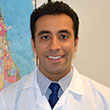Subspecialty Fellowship: Imaging

Name: Akhil Narang, MD
Current position: Cardiology Fellow (final year), Advanced Cardiac Imaging Fellow (first year), University of Chicago
I'm often met with bewilderment when I tell a non-cardiologist I'm pursuing a career in Advanced Cardiac Imaging. And to be fair, I knew little of what Cardiac Imaging consisted of until I started my residency at the University of Chicago, which boasts a renowned Cardiac Imaging group. Now that I'm in my final year of general Cardiology fellowship (which is also the first of two years of an Advanced Cardiac Imaging fellowship), I hope to share my experience with those considering a career in Cardiology and Cardiac Imaging.
The burden of cardiovascular disease is growing substantially despite impressive improvements in the past decades in overall mortality. Additionally, the landscape of healthcare is rapidly shifting and there is increasing emphasis on value-based care. Coupled together, these elements have resulted in a growing need for sophisticated non-invasive (and more cost effective) means of diagnosing, risk stratifying, and monitoring patients with cardiovascular disease. Similarly, the parallel technological developments in echocardiography, MRI, CT, and nuclear imaging and have led to an incredibly promising future for Cardiac Imaging.
My day-to-day schedule allows for simultaneous training in echocardiography, cardiac MRI, and cardiac CT that will eventually lead to Level III qualifications in each modality. On average I spend two days per week reading cardiac MRI and CT with the rest of the week devoted to echocardiography (TTE and TEE), research, and clinic. In addition, my schedule allows for dedicated time in the cath lab and OR to perform TEEs during structural/interventional cases.
So what is the value added of Advanced Cardiac Imaging? In the past few weeks, we have used cardiac MRI to aid in the diagnosis of myocarditis, helped our colleagues in Interventional Cardiology identify viable myocardium to tackle complex revascularization, and identified areas of scar to aid EP in VT ablations. We have performed cardiac CT to risk stratify patients with chest pain, aid in the planning of TAVRs and robotic mitral valve replacements. With echocardiography we have ascertained the mechanism of several mitral regurgitation, diagnosed thrombus in transit, and guided the placement of MitraClips.
There is no substitute for having a Cardiologist at the forefront of Cardiovascular Imaging. While echocardiography falls almost exclusively under the auspices of Cardiology, there is certainly competition from Radiology with cardiac MRI/CT. While the future is difficult to predict, there is little doubt that the clinical expertise of Cardiologists who interpret MRI/CT is increasingly sought after.
In many ways, Cardiac Imaging is the cornerstone of Cardiology. As technology continues to progress, Advanced Cardiac Imaging will continue to play larger roles in the management of patients and there is no more exciting time to join the growing world of multi-modality trained imaging Cardiologists.
